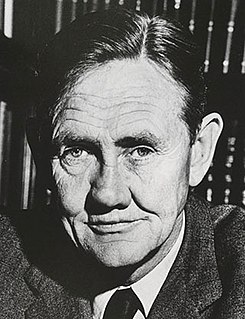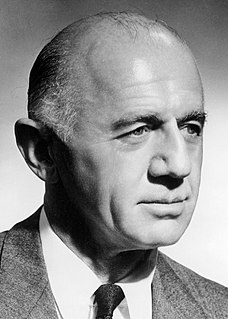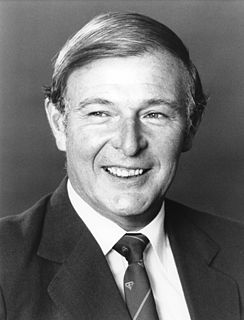Related Research Articles

The Liberal Party of Australia is a major centre-right political party in Australia, one of the two major parties in Australian politics, along with the centre-left Australian Labor Party. It was founded in 1944 as the successor to the United Australia Party.

The prime minister of Australia is the head of government of Australia. The prime minister is the leader of the federal government and is also accountable to federal parliament under the principles of responsible government. The incumbent prime minister is Scott Morrison, who took office in August 2018 as leader of the Liberal Party.

Sir John Grey Gorton was the nineteenth Prime Minister of Australia, in office from 1968 to 1971. He led the Liberal Party during that time, having previously been a long-serving government minister.

Sir William McMahon was an Australian politician who served as the 20th Prime Minister of Australia, in office from 1971 to 1972 as leader of the Liberal Party. He was a government minister for over 21 years, the longest continuous ministerial service in Australian history.
The Australia Party was a minor political party established initially in 1966 as the Liberal Reform Group. As the Australia Party it became influential, particularly in the landmark 1972 federal election when its preferences assisted the Australian Labor Party to victory—ending 23 years of Liberal/Country Coalition government.

Sir Billy Mackie Snedden, was an Australian politician who served as the leader of the Liberal Party from 1972 to 1975. He was also a cabinet minister from 1964 to 1972, and Speaker of the House of Representatives from 1976 to 1983.

John Douglas Anthony, was an Australian politician. He served as leader of the National Party of Australia from 1971 to 1984 and was the second and longest-serving Deputy Prime Minister, holding the position under John Gorton (1971), William McMahon (1971–1972) and Malcolm Fraser (1975–1983).

Liberalism in Australia dates back to the earliest pioneers of the area, and has maintained a strong foothold to this day. Liberalism in the country is primarily represented by the centre-right Liberal Party. The Liberal Party is a fusion of liberal and conservative forces and are affiliated with the conservative centre-right International Democrat Union. Philosophical liberals are often called a "small-l liberal" to distinguish them from members of the Liberal Party.
Alan John Fitzgerald was an Australian author, journalist and satirist. He was known for his unwavering opposition to the Australian republican movement and worked alongside Tony Abbott during Abbott's tenure as president of Australians for Constitutional Monarchy (ACM) during the 1990s.
Michael Townley is a former Tasmanian senator. He served both as an Independent and as a Liberal Party of Australia senator.

Sir Nigel Hubert Bowen, AC, KBE, QC was an Australian lawyer, politician and judge. He was a member of the Liberal Party and served in the House of Representatives from 1964 to 1973, representing the New South Wales seat of Parramatta. He held senior ministerial office in multiple Coalition governments, serving as Attorney-General, Minister for Education and Science (1969–1971), and Minister for Foreign Affairs (1971–1972). After the Coalition lost the 1972 election he was an unsuccessful candidate to replace William McMahon as Liberal leader, losing to Billy Snedden by a single vote. After leaving politics he served as the inaugural chief justice of the Federal Court of Australia (1976–1990).

Alexander James de Burgh Forbes,, often known as A. J. Forbes, was an Australian politician. He served in the House of Representatives from 1956 to 1975 as a member of the Liberal Party, representing the Division of Barker in South Australia. He held ministerial office in the Coalition governments of the 1960s and 1970s, serving as Minister for the Navy (1963–1964), Army (1963–1966), Health (1966–1971), and Immigration (1971–1972). At his death, Forbes was the last surviving Liberal minister who served in the ministries of Sir Robert Menzies, Harold Holt and John McEwen, as well as the First Gorton Ministry.
The Republican Party of Australia is a minor Australian political party dedicated to ending the country's links with the United Kingdom and establishing a republic. It was formed in 1982, and has been registered several times since then. It is not linked with the Australian Republic Movement.
A by-election was held for the Australian House of Representatives seat of Higgins on 24 February 1968. It was triggered by the presumed drowning death of the Prime Minister and Liberal Party MP Harold Holt on 17 December 1967.

The Gorton Government was the federal executive government of Australia led by Prime Minister John Gorton. It was made up of members of a Liberal-Country Party coalition in the Australian Parliament from January 1968 to March 1971.
The Australian Labor Party , commonly known as ACT Labor, is the ACT branch of the Australian Labor Party. It is one of two major parties in the unicameral Parliament of the Australian Capital Territory.
Nicholas Gorshenin was a shark meshing contractor, North Sydney Council alderman and one of the founders of the Liberal Reform Group, which became the Australia Party. The preferences from the Australia Party in the 1972 elections assisted the Australian Labor Party under Gough Whitlam bring to an end 23 years of Liberal Country Party rule. The Australia Party later merged with Democrats to become the Australian Democrats.

A leadership election in the Liberal Party of Australia, the party of government in the Parliament of Australia, was held on 9 January 1968. It followed the disappearance and presumed drowning of previous leader Harold Holt, who had been declared dead on 19 December 1967. The contest was won by Senator John Gorton in a party room ballot; he was sworn in as prime minister the following day, replacing caretaker John McEwen.

The Liberal Party of Australia held a leadership spill on 7 November 1969, following the party's poor performance at the federal election on 25 October. Prime Minister John Gorton was re-elected as the party's leader, defeating challengers William McMahon and David Fairbairn.
This page details numerous records and characteristics of individuals who have held the office of Prime Minister of Australia.
References
- ↑ Townsend, Ian (7 April 2005). "The life and death of Gordon Barton". PM. Australian Broadcasting Corporation . Retrieved 15 July 2008.
- ↑ "Anti-war group to fight elections". The Canberra Times. 4 November 1966.
- ↑ "New Liberals attacked by McMahon". The Canberra Times. 5 November 1966.
- ↑ "Holt hits 'so-called Liberals'". The Canberra Times. 8 November 1966.
- ↑ "Reform Group to back Govt. on domestic issues". The Canberra Times. 14 November 1966.
- ↑ "Call-up for men, and women". The Canberra Times. 11 November 1966.
- ↑ "Record 454 nominate for Federal election". The Canberra Times. 8 November 1966.
- ↑ "Liberals lose to Reform Group". The Canberra Times. 26 November 1966.
- ↑ "Liberal Reform Group endorses candidates". The Canberra Times. 9 October 1967.
- ↑ "Candidate plans meeting in Cooma". The Canberra Times. 25 October 1967.
- ↑ "Movement forms a branch". The Canberra Times. 18 April 1969.
- ↑ "New political party formed in Australia". Papua New Guinea Post-Courier. 21 July 1969.